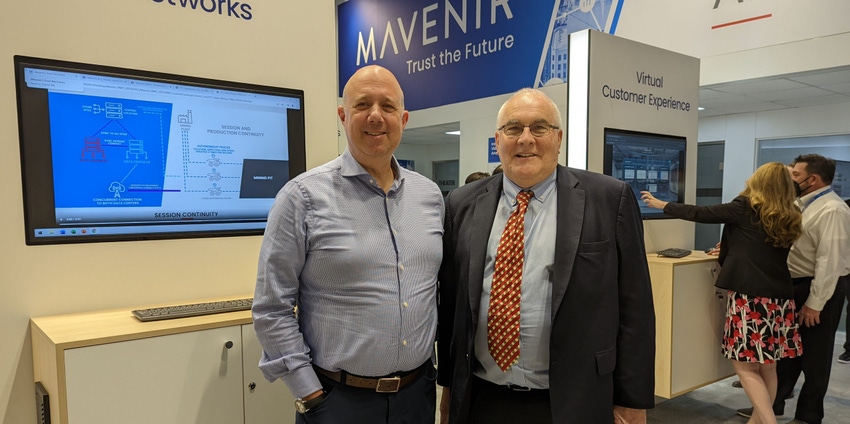We caught up with Mavenir at Mobile World Conference to discuss the current state of OpenRAN, and it had some choice words to say about the approaches of kit vendors Nokia and Ericsson.
March 1, 2022

We caught up with Mavenir at Mobile World Congress to discuss the current state of OpenRAN, and it had some choice words to say about the approaches of kit vendors Nokia and Ericsson.
We asked Mavenir’s SVP of business development John Baker and CMO Stefano Cantarelli to gauge how industry is feeling towards the technology, now that it has been allowed to gather together for the first time in years and discuss such things.
“Clearly the train has left the station, there’s a lot of buzz about OpenRAN – it’s back to the haves and have nots,” Baker told us. “I see a lot of interest from operators and a lot of interest from the component suppliers. But on the other side of it, about [Nokia’s recent statement about OpenRAN] – they’re full of it. Because they’re a startup in OpenRAN themselves but are not doing anything. They’re trying to pass on a message that the OpenRAN community is confused, that there are no real OpenRAN players out there, and they’re trying to position themselves as the real OpenRAN player. Digging underneath that, we’re having to call out the Nokia’s and Ericsson’s for confusing the story and trying to keep the confusion running around the marketplace, about the status of OpenRAN.”
“Ericsson has been clear right up front that [they’re] not going to participate in OpenRAN. They name their products at Cloud RAN but you can’t mix and match, so they don’t they don’t meet the OpenRAN requirements. I stand very firm that unless you’ve got two suppliers interworked, then you haven’t got OpenRAN.”
Baker didn’t mince his words with regards to how he sees Nokia’s strategy either: “We’ve been asking for the last two years, every month almost, we’re ready to interwork, when are you ready? And they never get there. So our view is Nokia doesn’t have anything, they’re just trying to protect an old silicon strategy. And that’s their problem. They’ve had two failed attempts, in my opinion, of their silicon strategy – first time they got it completely wrong. Second time they got it too late for the industry because software is now replacing where they are with silicon. I think at the end of the day those two logos are going to disappear in the distance.”
Cantarelli added: “I think Ericsson and Nokia are not stupid. They know OpenRAN is the future, it’s just at the beginning they didn’t think about it, and now they’re a bit late. So they’re protecting their legacy. And they’re waiting for when they’re going to be ready, so it’s purely a delaying technique.”
Nokia and Ericsson would of course phrase their own positions towards OpenRAN differently to the above, but it does serve to again highlight what is perhaps something of a divide within the telecoms industry – some clearly think OpenRAN is inevitable, immediate, and of singular importance, and others perhaps don’t think it will be as seismically disruptive as all that, and least not right now. It’s good then that MWC is in full swing, and the industry is able to get together once more and argue the toss face to face, albeit separated by covid masks.
About the Author(s)
You May Also Like








.png?width=300&auto=webp&quality=80&disable=upscale)


_1.jpg?width=300&auto=webp&quality=80&disable=upscale)


.png?width=800&auto=webp&quality=80&disable=upscale)